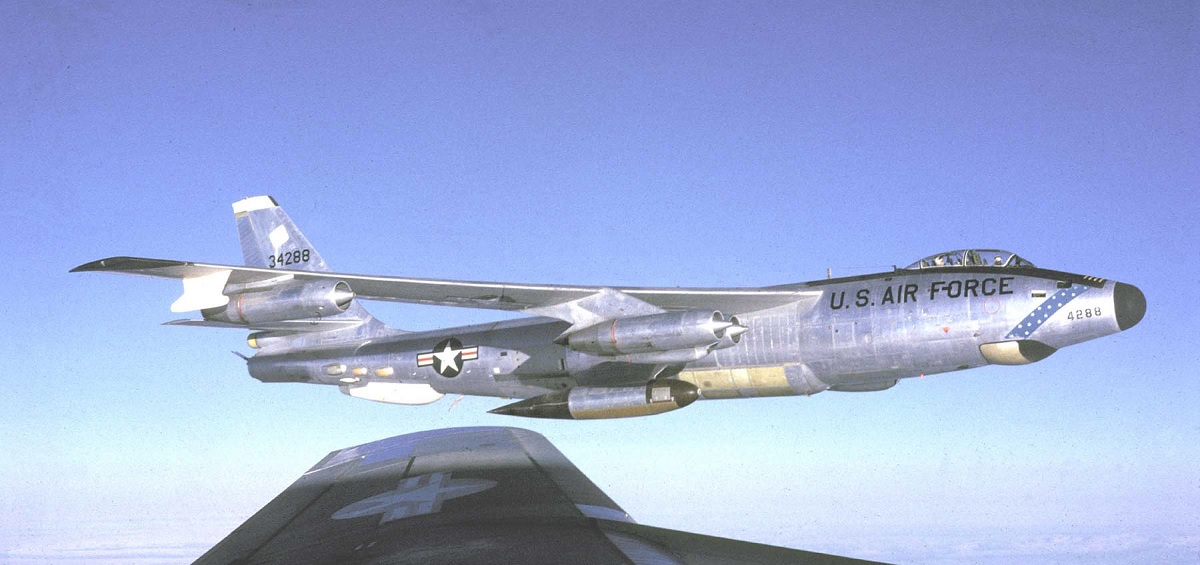The USAF operated 28 B-47 bomb wings and four RB-47 reconnaissance wings, totaling 1,357 B-47s and 175 RB-47s, during the height of their use in 1958
The Boeing B-47 Stratojet was a turning point in the history of aviation and an innovation in aircraft design. It included a lot of cutting-edge components for the time, like swept wings, underwing jet engines, main landing gear mounted on the fuselage, and automated systems that reduced the crew size to three from the usual four.
Today, every major jet aircraft comes from the B-47. Due to all of these capabilities, the Stratojet became a crucial part of the Strategic Air Command (SAC) of the U.S. Air Force in the 1950s and early 1960s, serving both as a nuclear bomber and a reconnaissance aircraft.
In May 1951, the propeller-driven B-29s and B-50s in the SAC’s medium bomber units started to be replaced by the B-47, which was created to satisfy the demand from 1944.

Notably, the B-47’s top speed was more than 200 mph quicker even though it could carry roughly the same amount of bombs as the aircraft it replaced. Due to the B-47’s limited range in comparison to SAC’s heavy bombers (the B-36 and later the B-52), Stratojet units were frequently sent on temporary assignments to forward air bases all over the world.
These deployments typically lasted three months, but thanks to the Reflex Action program, they were cut down to three weeks starting in 1957.
The Stratojet served as a nuclear strike bomber, but its speed and payload also made it an excellent aircraft for strategic reconnaissance. Photographic reconnaissance B-47s made many overflights of the Soviet Union between 1952 and 1956, giving detailed images of the country’s military and industrial facilities. The Soviet Union’s intercontinental ballistic missile program and air defense systems were the subjects of Stratajet intelligence gathering.
The B-47’s weather reconnaissance models acquired air samples from Soviet nuclear explosions in addition to collecting weather data. These crucial RB-47 missions over and near the Soviet Union’s border were risky; Soviet fighters shot down two reconnaissance Stratojets and damaged one, killing seven USAF personnel and imprisoning two others for a short time.

Almost 2,000 Stratojet aircraft were produced by Boeing, Douglas, and Lockheed between 1947 and 1957. The USAF operated 28 B-47 bomb wings and four RB-47 reconnaissance wings, totaling 1,357 B-47s and 175 RB-47s, during the height of their operations in 1958.
According to Robert Robbins, a B-47 test pilot, “the best way to tell about the performance of the Stratojet was to say that any good crew could have flown it. It took no unusual ability or education. […] Rather, the credit should go to the men who carried out these visions on the drafting boards and the factory workers who made the visions a reality.”
The USAF phased out its final B-47 bombers in 1965, and in 1969, a WB-47E Stratojet was retired.

Source: National Museum of the U.S. Air Force and Boeing
Photo by U.S. Air Force

